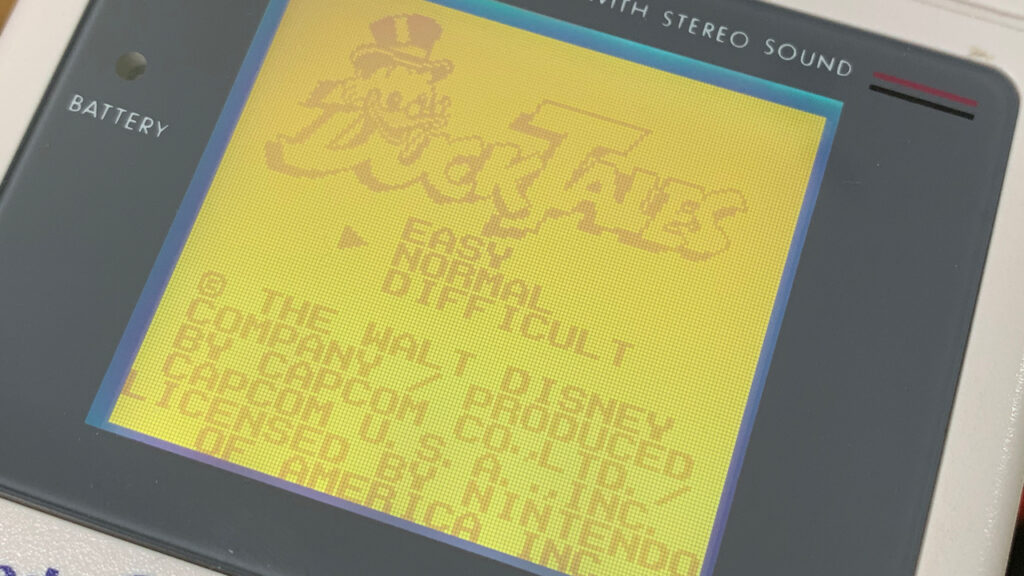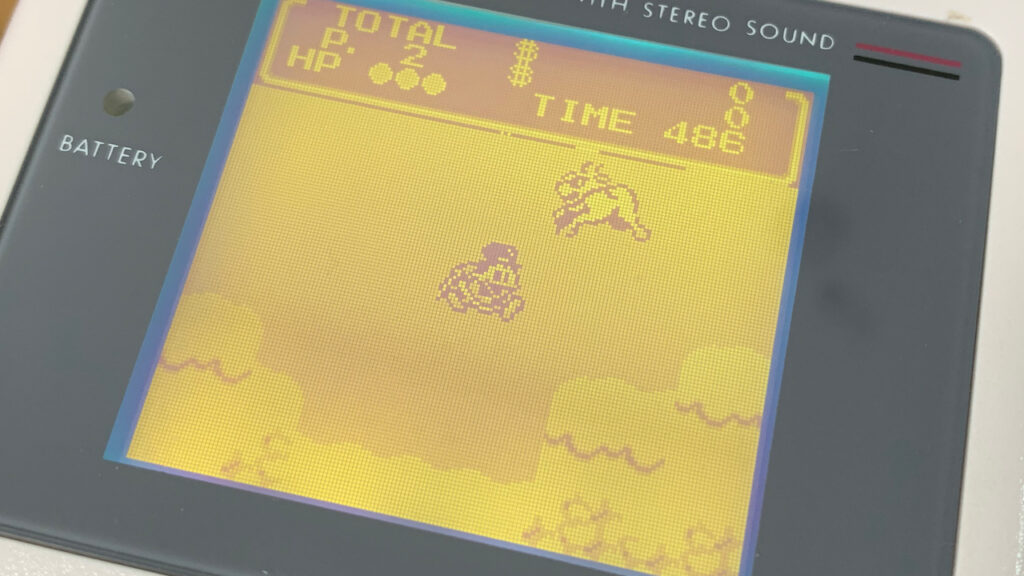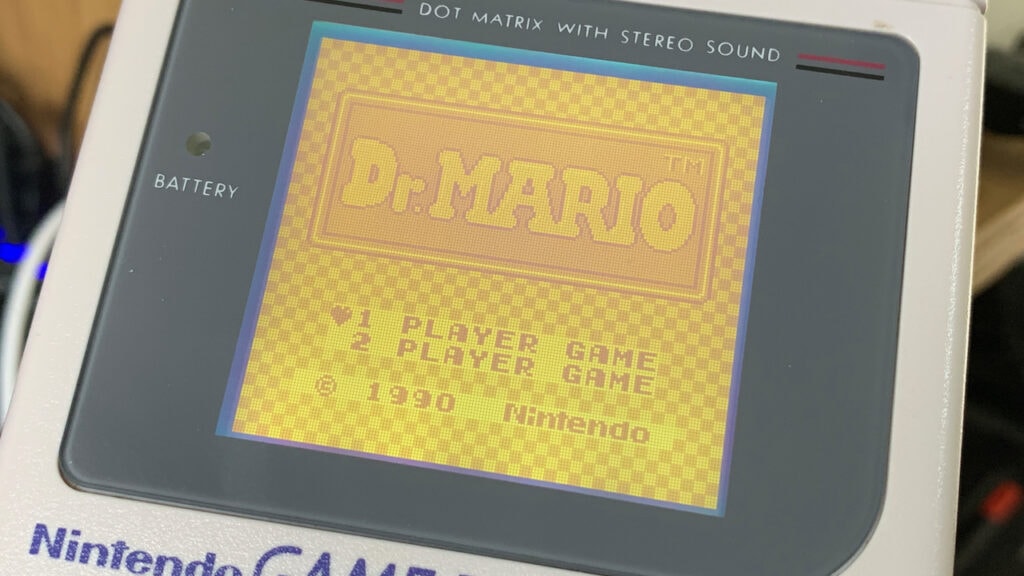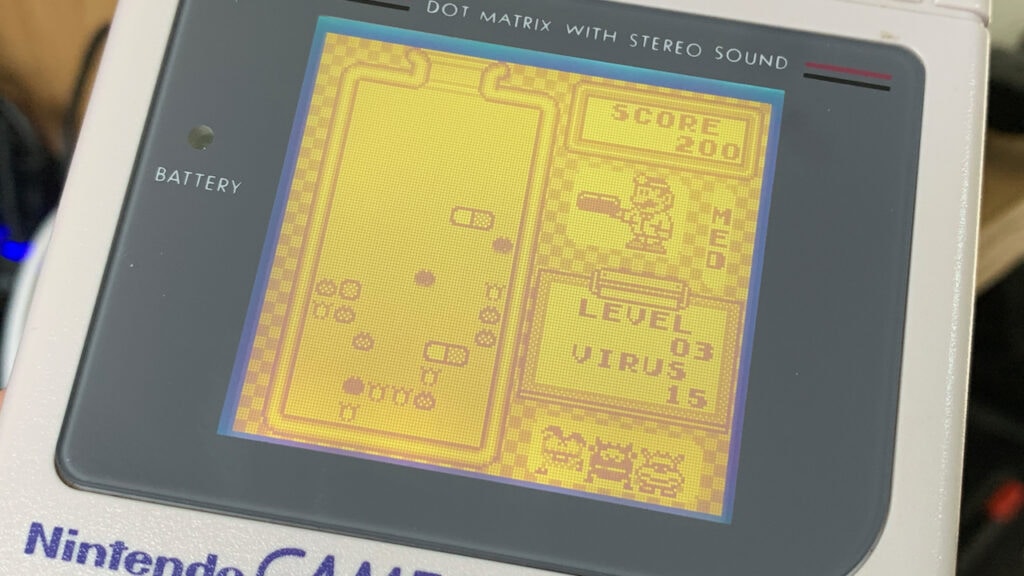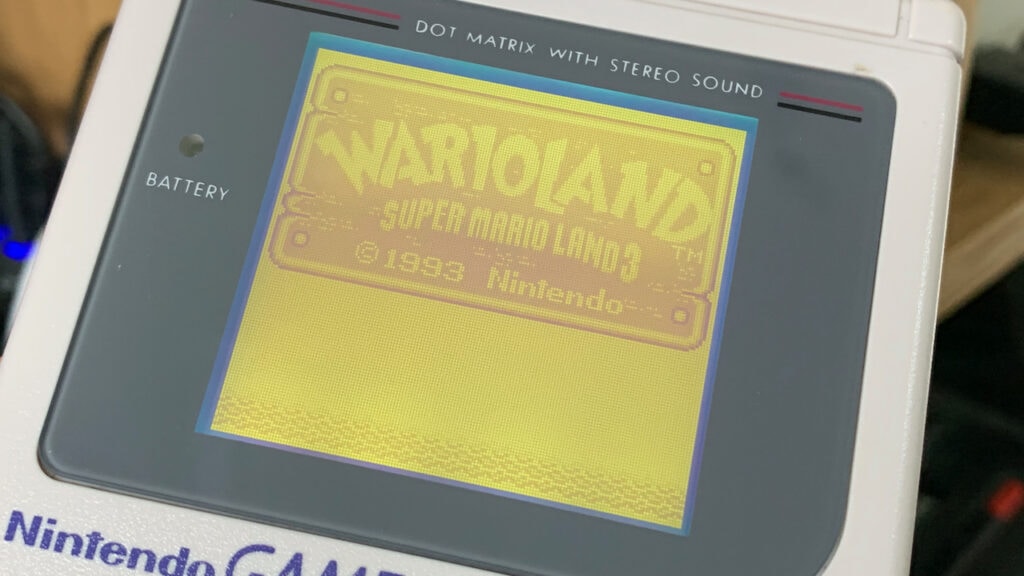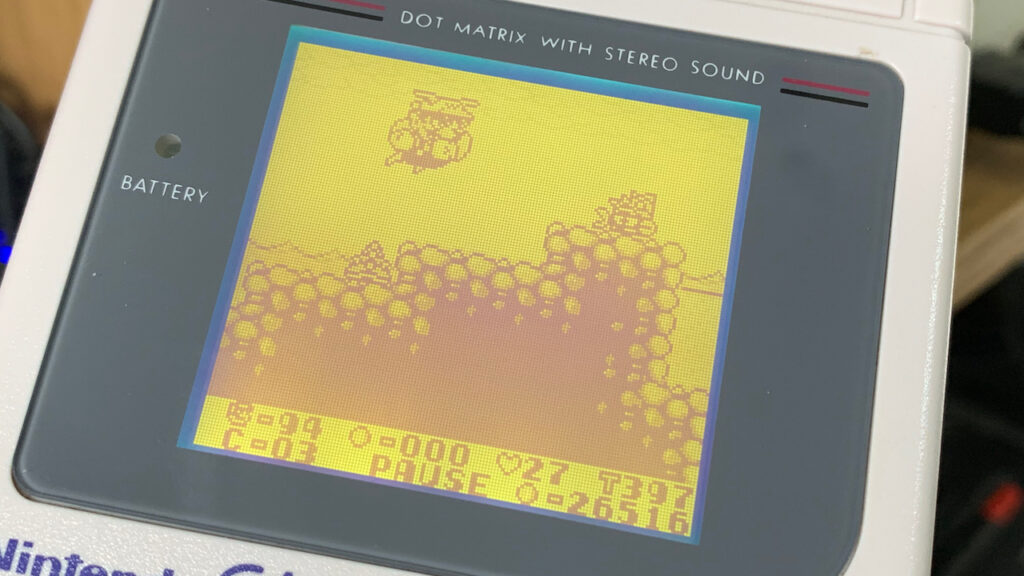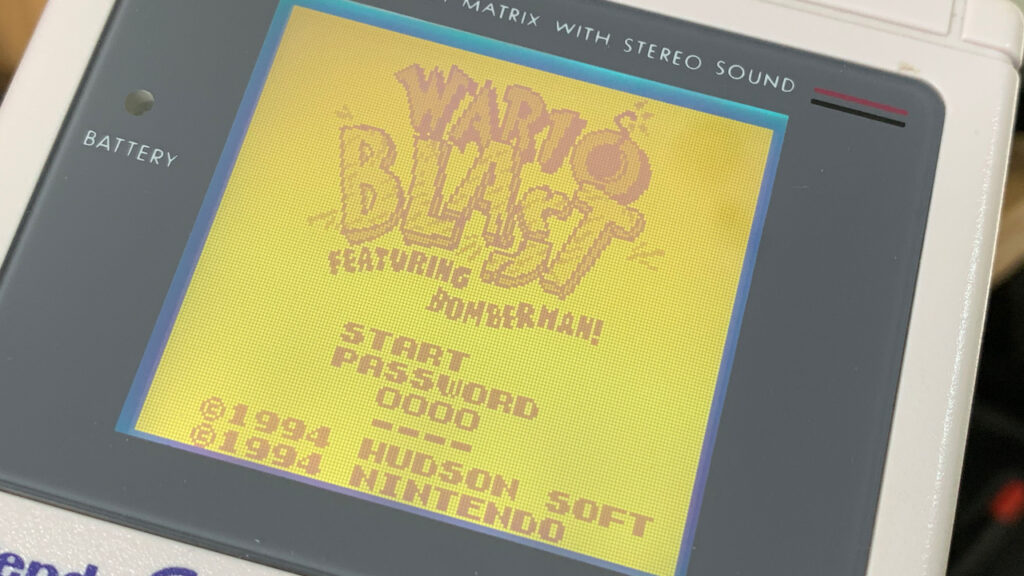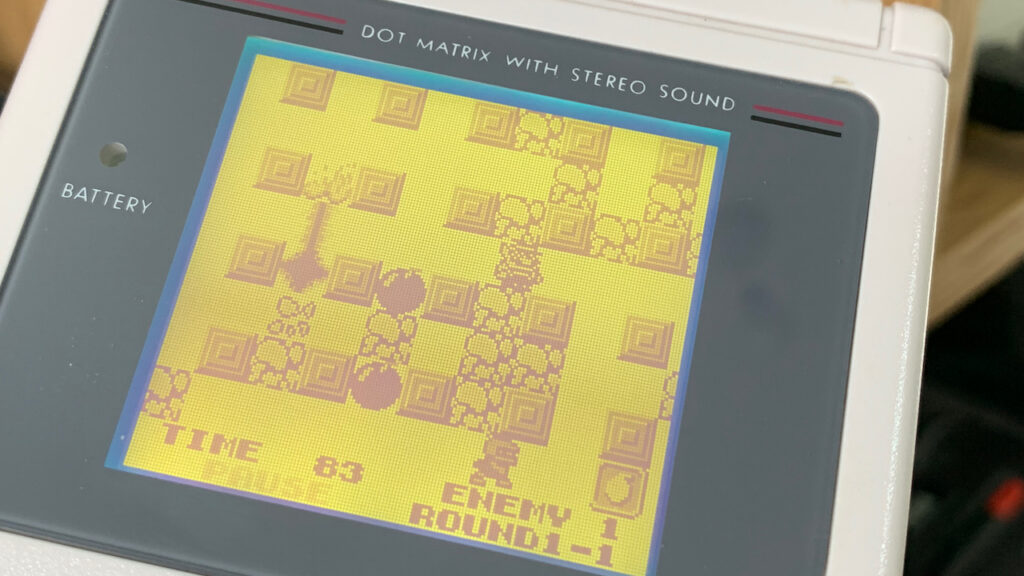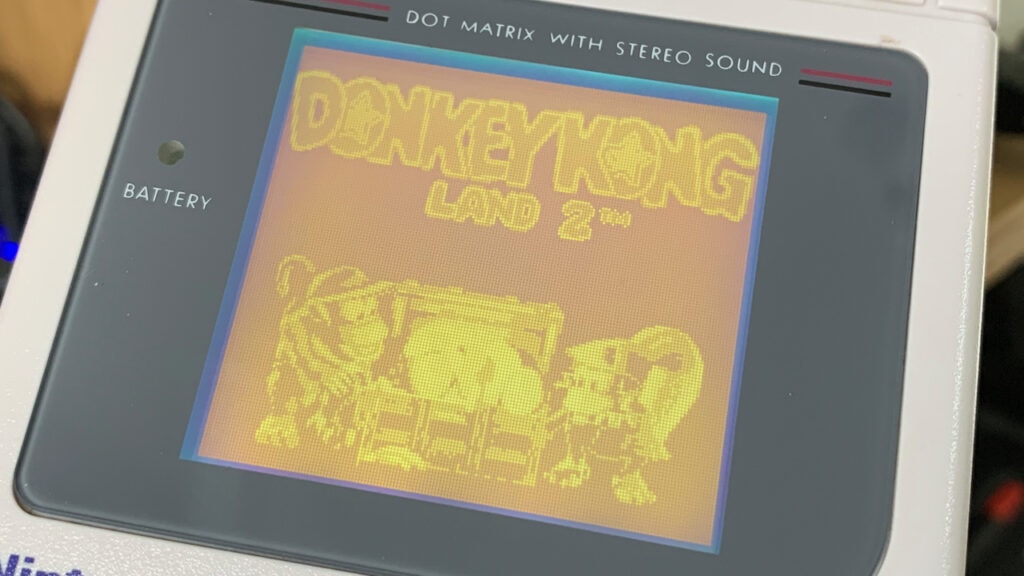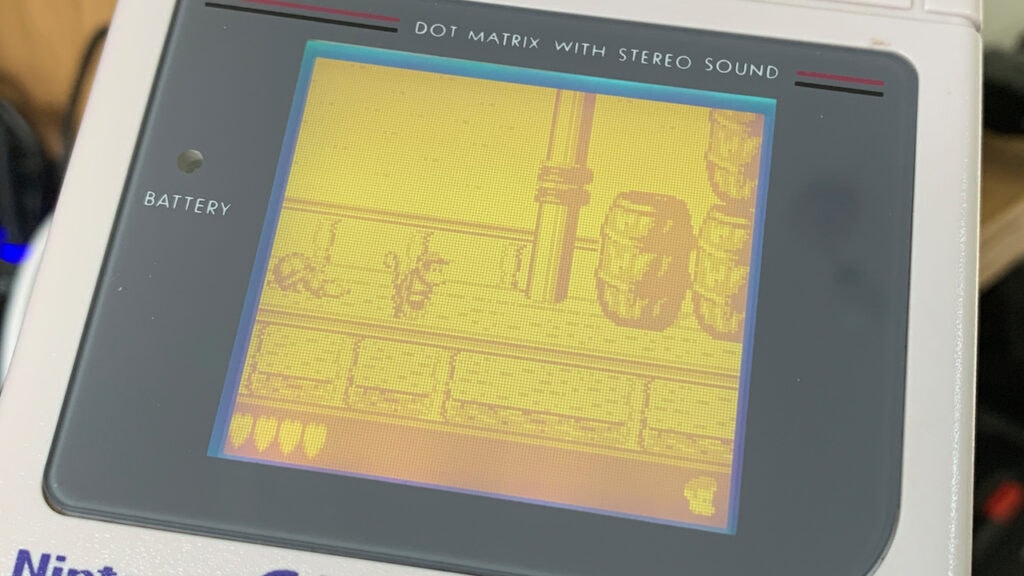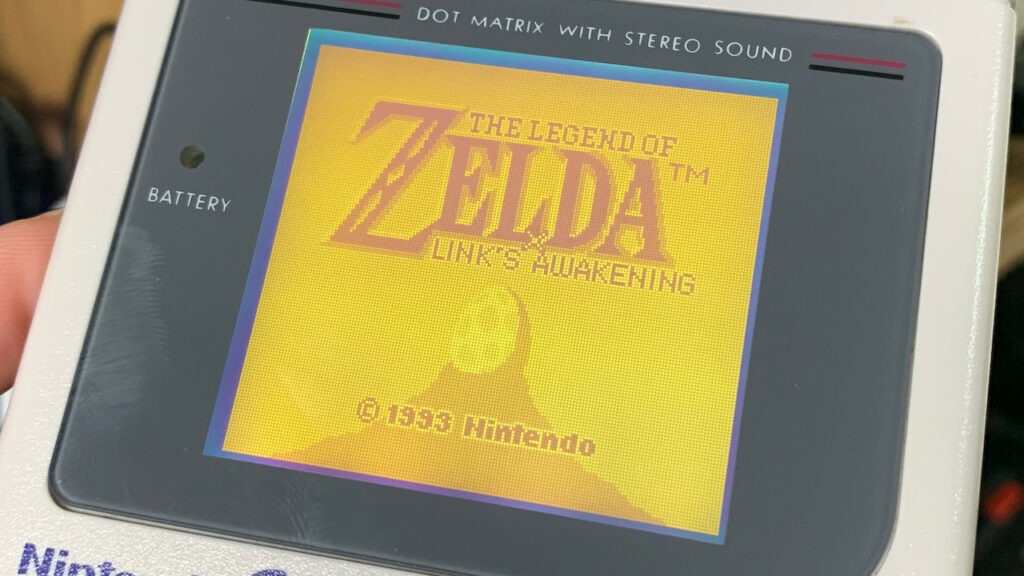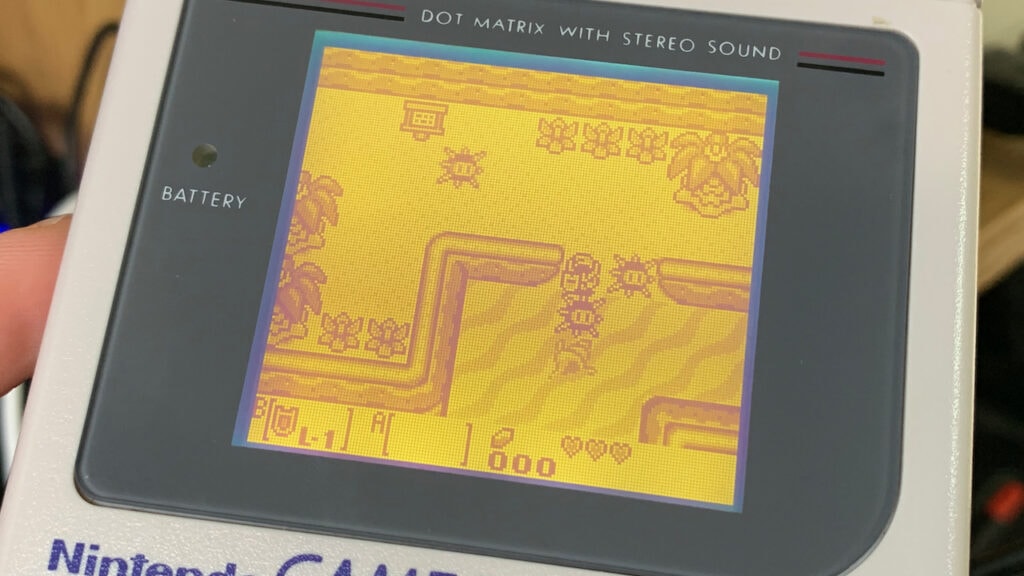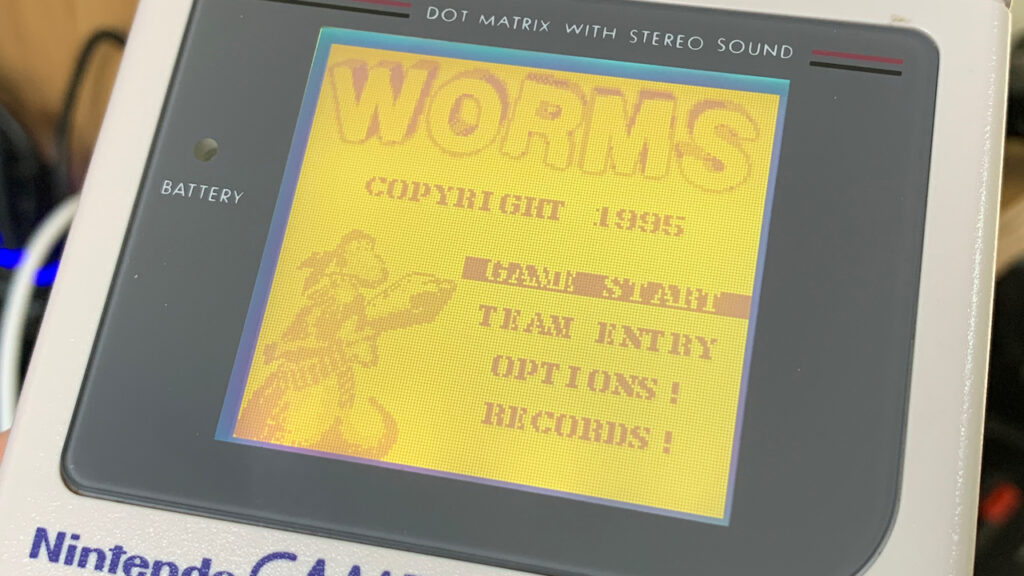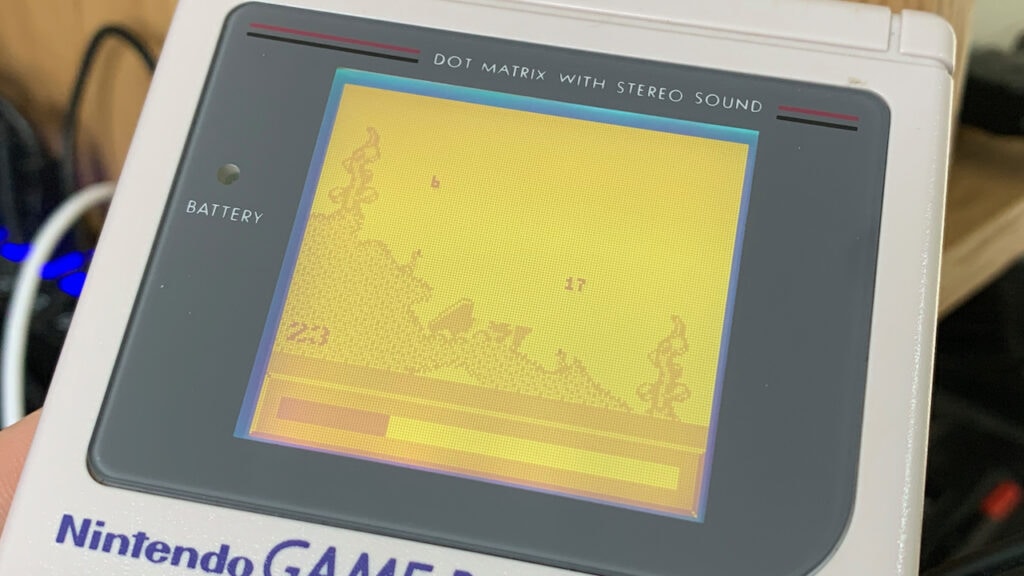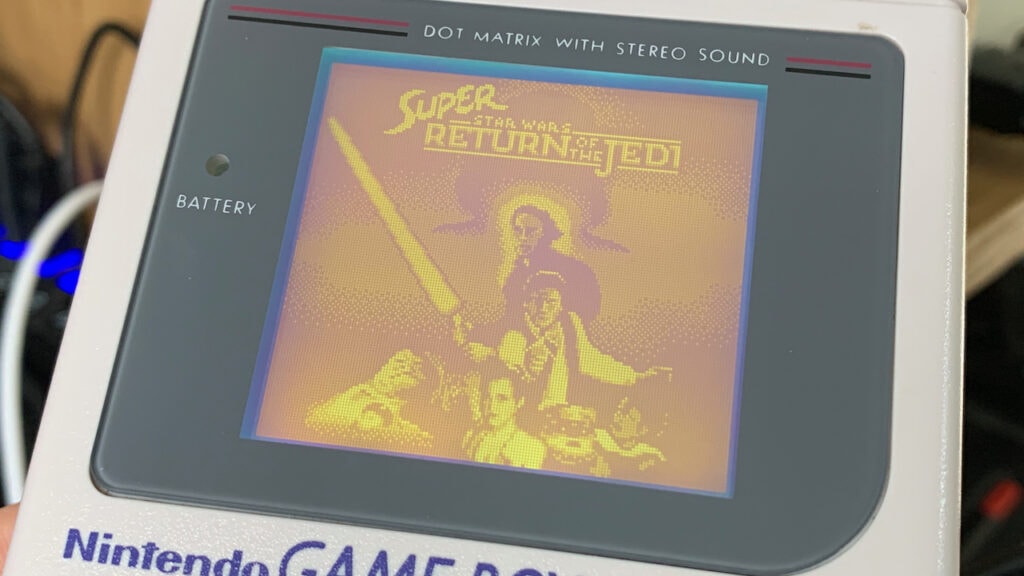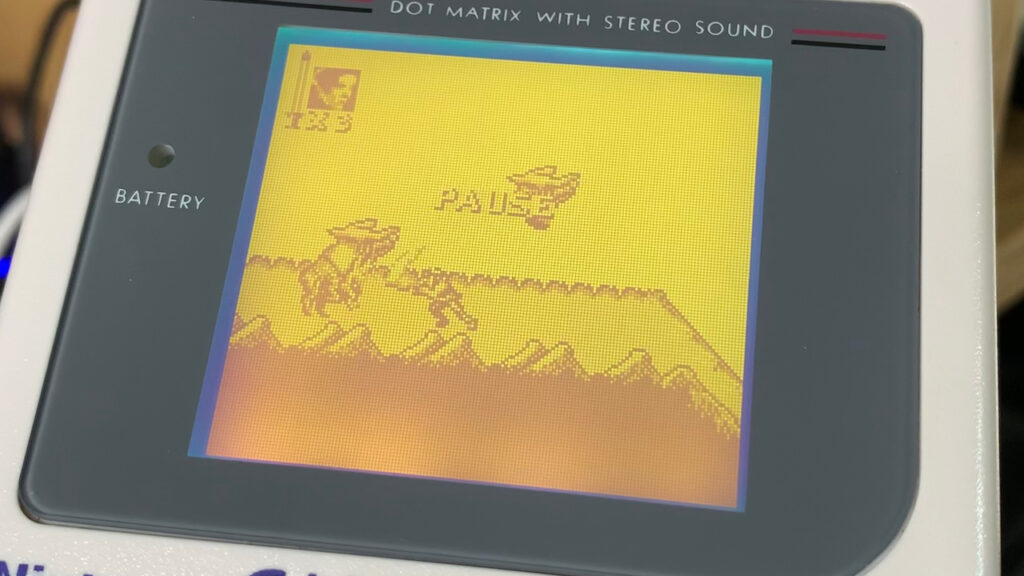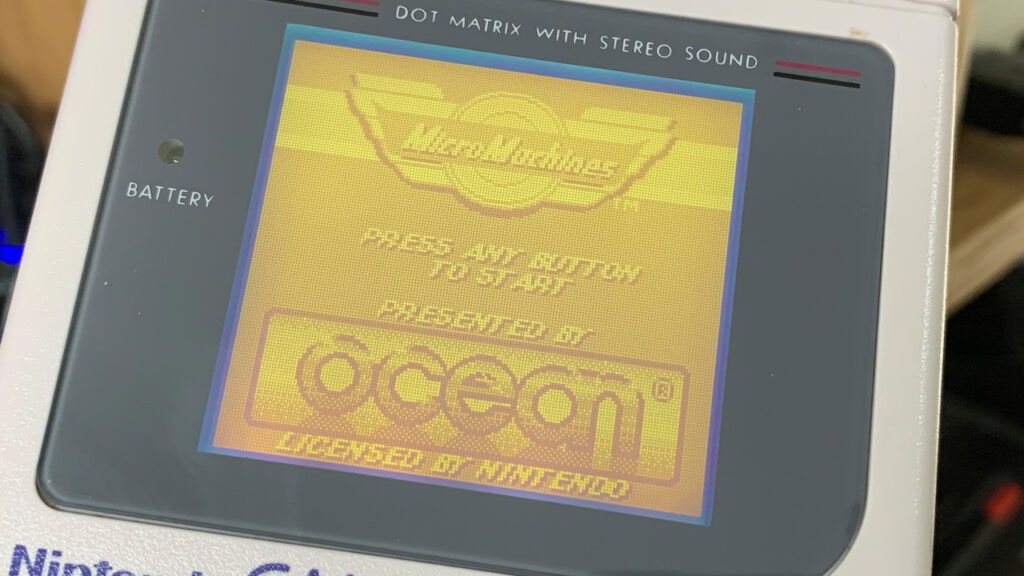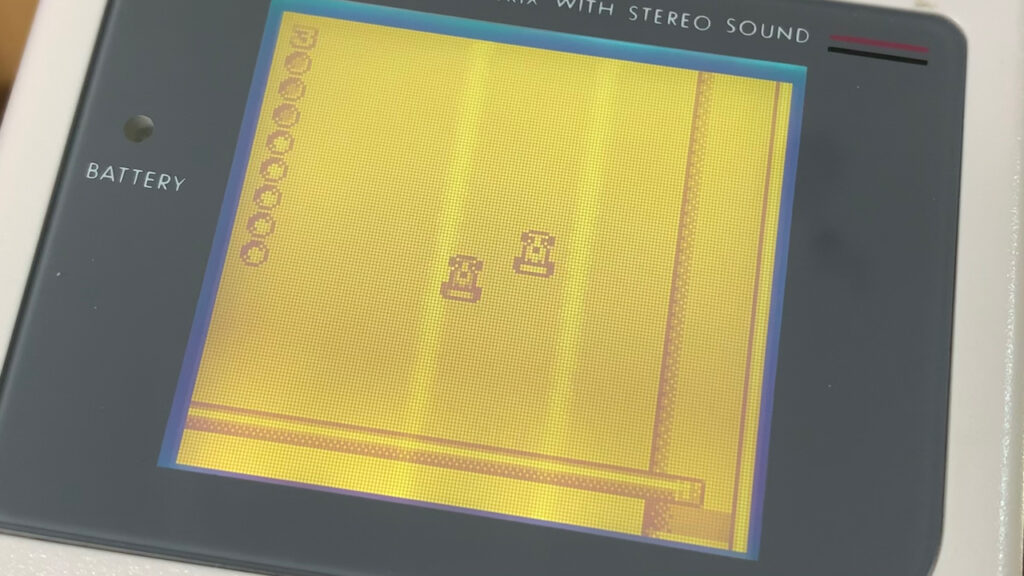The red battery indicator. That text at the top of the screen, that says; “Dot Matrix With Stereo Sound”. The speaker grille in the bottom right. The Nintendo Gameboy is everything to those of us who were there and continues to be just as iconic to younger generations of videogame players who weren’t. Can you blame us?
This almost-invincible slab of carefully engineered plastic is a true classic, and playable on this very same system are a dazzling array of software. A huge library to satisfy pretty much anyone’s tastes – Literally over 1000, in fact. Of course, they’re not all classics – Hell, there’s a lot of, shall we say, crap.
But, everyone knows about all of those well-trodden standouts. You’ve seen the same “Best of” lists trotted out time and time again. You know the usual suspects, and if you know the system, you can probably guess what releases are on there without even clicking the link.
So, in a bid to be, I dunno, a little more original – You’re going to get a taste of what titles left a lasting impression on me, for better or worse. After all, the titles that stand out most in your memory aren’t necessarily the greats – It’s the weird licensed game your parents got you because of the name, or the bargain bin purchase you made with what little pocket money you had at the time. In no particular order…
These are the Game Boy Games that made me…
Duck Tales – 1990, Capcom
So it starts several years before I even owned a Game Boy, and it’s safe to say that in 1990, Capcom’s adaptation of Duck Tales was a known quantity everywhere. The Nintendo Entertainment System was absolutely huge – Mainly because it was (and is) a great platform adventure. Bright colours and cracking tunes did a superb job of bringing Disney’s cartoon home.
But what happens when you strip those colours away, make those sprites smaller and drastically reduce screen real estate? It’s a conundrum that was the failure of many a NES to GB conversion in the portable system’s early years. Duck Tales just about passes across the tightrope of being an effective port effort without tumbling into the abyss of eye and ear strain.
A relative of mine used to stay with us every once in a while, and sometimes he’d bring his consoles and a heap of the best releases of the time. This game was one of them, and while I had a fair amount of exposure to the NES original (through friends), it’s this version that I had the most time with – As it was also the first time I had spent any meaningful time playing Game Boy games as well, you can see how this one left a mark on me.
Somehow, the game itself makes it through the translation – Those Mega Man-like sprites are still clear on the small screen, the music is practically identical to the original NES tunes, and it still plays pretty well by comparison.
Dr. Mario – 1990, Nintendo
It would be years until I got my own Game Boy – Not until the release of the smaller Pocket edition in 1996, would I finally get a handheld of my very own, that Christmas. Of course, I needed something to actually play on it, but didn’t have much of a budget left after getting the system itself – I had already played Tetris a lot on the NES, so I went for Dr. Mario.
While it’s a mere minnow when compared to the gargantuan title of Tetris, Nintendo’s pill-dropping puzzler has its own charm. It asks the player to deal with a lot more random elements than Tetris, juggling both the pill pieces as well as the placement of the viruses that need to be eradicated by dropping the aforementioned capsules onto them. It doesn’t quite have that addictive quantity of that other drop-puzzler, but it’s still fun.
Dr. Mario kept me glued to my Pocket long enough to keep me satisfied until I could afford more games for my shiny new silver system.
Plus, it has some of the most ear-pleasing, toe-tapping tracks you’ll ever hear on the system. You’ll never get “Fever” out of your head. Ever.
Super Mario Land 3: Wario Land – 1993, Nintendo
The “Land” series was known to be a drastic departure from Mario’s home console brethren. Developed under Nintendo’s R&D1 department (instead of R&D4, later known as EAD, who would usually develop titles from the series), these portable instalments were a breath of fresh air for the Game Boy. They were made with the system’s limitations and strengths in mind, and each of the Land games are a joy to play.
Of course, I didn’t know this at the time, and when I had £35 burning a hole in my pocket, a double pack of Super Mario Land 3: Wario Land and Wario Blast seemed like a pretty good purchasing decision to me. When I took the extra-long box home and slapped this cart into my system, I was pretty impressed. That chunky Wario sprite had oodles of character, his abilities far removed from his do-gooder doppelganger, and the levels were heaps of fun to play through.
In addition, with the whole game being geared towards the protagonist’s greed and desire for treasure, there was finally a reason to collect all the coins and find every piece of treasure – After all, maxing the overall coin score led to the best ending! This was an endeavour made considerably easier with the Debug mode, something rarely seen in a Nintendo release.
It was Wario Land (and this budget double-pack) that made me fall in love with the character, and many of the games he’s starred in since.
Wario Blast: Featuring Bomberman – 1994, Hudson Soft/Nintendo
The mid-90’s saw a weird mini-trend of Japanese titles given facelifts with the addition of more popular characters – See Puyo Puyo’s miriad of converstions (Dr. Robotnik’s Mean Bean Machine, Kirby’s Avalanche) or Panel De Pon’s double whammy of adopting both the Tetris license and a Yoshi makeover.
It’s not like Bomberman wasn’t a known character in 1994. He’s been seen on the NES, Game Boy, SNES and Mega Drive already in the West – So when Nintendo brought over Bomberman GB, added Wario as the star and playable character renamed the game and called it a day; you can be forgiven for being a bit confused.
I ended up obtaining Wario Blast as part of the aforementioned double-pack with Wario Land, and it’s easily the lesser of the two titles – It’s just a simple version of Bomberman’s popular multiplayer mode. Even in single-player, you pick from Wario or Bomberman and take on the other character in a series of basic multiplayer-style arena battles.
The funny thing is that we all know Bomberman is known for excellent multiplayer – However, Wario Blast does not have any sort of multiplayer…Unless you play the game using the Super Game Boy (in fact, it’s one of the five best releases that support the accessory).
But, it’s not like I didn’t get my money’s worth out of the game – Of course I finished it as both Wario and Bomberman (not that there is a single thing to make the heroes unique, other than a different sprite).
Donkey Kong Land 2 – 1996, Rare/Nintendo
Around this time, Donkey Kong was making a helluva comeback. Of course, there was the absolutely huge Donkey Kong Country (and its two sequels), plus the Gameboy’s Donkey Kong ’94, but Rare would also do the unthinkable and bring their brand of monkey madness to Nintendo’s portable.
For some reason, I skipped the original and went straight for the second Land game, featuring Diddy and Dixie Kong in the starring roles. While sometimes the detailed backgrounds can be a little noisy to see on the system’s less-than-clear display, the gameplay is more than a decent facsimile of the Country series.
Donkey Kong Land 2 is another ideal portable platformer – Bite-sized levels with plenty of secrets to discover (especially if you want to see everything DKL2 has to offer). I spent a good long time wringing every last piece of gameplay I could out of this one. The DKL games don’t really get their due in most of these “Best of” lists, to which I say PHOOEY.
The Legend of Zelda: Link’s Awakening – 1993, Nintendo
OK, so of course this one’s an obvious choice on the list of the best Game Boy games. Give me some slack, OK? While I enjoyed the Switch remake, they didn’t quite manage to convey the surreal charm of this incredibly odd entry. The Legend of Zelda: Link’s Awakening is exactly the sort of game I was looking to play. Coming off the back of playing (and finishing) A Link To The Past for the first time, I was ready for more of Link’s adventures (and I could never get on with the first two NES entries).
I picked this game up at the beginning of the Summer holidays, and I just couldn’t put it down. In a pre-internet age, I made many a phone-call to the Nintendo Hotline to help me through some of the more obscure puzzles the game had to offer. Yes, that’s right – When you were stuck on a game, you couldn’t just load up GameFAQs. No, you either asked friends, hoped you had a magazine with the answer in, or phone a premium-rate number and ask Nintendo yourself.
Anyways, I digress. I spent a whole Summer trying to find the right blend of sunlight and shade so I could properly see my GB Pocket screen outside and play Zelda. I scoured every square of Koholint for those Secret Shells, I spent ages figuring out who wanted to trade the weird doohads I had in my inventory, and I struggled to find the weak point of every boss I encountered. And it was fantastic.
Worms – 1995, Ocean
As the Game Boy was supposedly coming to the end of its life (a few years before Pokemon came out and made us all think again), there were a lot of budget releases out there. At this time, I was in High School and realised I could eat less food at lunch and use the rest of my lunch money to save up for games to buy in the Woolworths on the way home.
And there were a lot of cheap Gameboy games out there, including a few budget re-releases by Ocean Software. Worms was one of those lunch money purchases and honestly might have been better spent on some soggy school chips. It’s…not a terrible port by any stretch of the imagination. It’s not just really a game that works well if you don’t have many friends that play video games (like me). I’d read all the positive reviews of other versions of Worms and was certain I’d love this port. I didn’t.
For game that’s too incredibly bare-bones and simplistic to be enjoyable in single-player, I admittedly played it more because I felt I had to after spending money on it, rather than because I enjoyed it. That’s not to say I don’t like Worms, because I spent a ridiculous amount of time (and internet phone bills) playing Armageddon on PC a few years later.
But, at least it taught me the valuable lesson of considering my gaming purchases wisely.
Super Star Wars: Return of The Jedi – 1995, Lucasarts
Suddenly in the mid-’90s, Star Wars became a huge thing again. I’d seen the films on TV when I was younger, inherited a few of the original figures and somehow the franchise hadn’t clicked with me. My Dad had started to take me to the cinema around at this point in my life, and just in time for the 1997 Special Edition versions of Star Wars, Empire Strikes Back and Return of The Jedi to be released in cinemas.
And after seeing these movies on the big screen, it all made sense to my now-teenage mind. Finally being able to see the Original Trilogy how it was (mostly) meant to be seen, on a huge screen and loud as hell surround sound, I could now appreciate the Saga. After we saw Jedi, my Dad took me to Toys ‘R’ Us to treat me to something, and well – I couldn’t help but pick up the Game Boy game based on the movie.
While Star Wars and Empire Strikes back previously ended up on the system, these were mere ports of the NES versions published by JVC. For some reason, this port was Super Star Wars: Return of The Jedi, based on the Super Nintendo versions, complete with the wild deviations from the original subject matter.
They tried hard to keep it as close to the original 16-bit version, but it’s just impossible. It’s incredibly janky at times, combat can be fiddly and there are way too many Leap of Faith jumps. Not a great game, at all and I never got anywhere near finishing it (oh, did I try).
But, this one’s on the list for the memories of having those good times with my Dad – Time I sadly won’t get back again.
Micro Machines – 1995, Codemasters/Ocean
So, we come to what I think was one of the last Game Boy games I ever purchased. Another one of those budget Ocean releases, Micro Machines is of course a port of the classic NES racer, and it doesn’t really lose anything from the translation. You’ve got your multitude of weird and wonderful vehicles, plus those truly ingenious tracks that take place in bathtubs, pool tables, gardens and other household locales.
The handling takes a little time to get used to, and the difficulty definitely has some nasty spikes to it at some point (especially with some of the more unwieldy vehicles), plus the lack of any sort of ability to save your progress makes the idea of finishing Micro Machines quite a daunting one. But, outside of those issues, it’s a fun little blast – I wouldn’t say the system is inundated with driving games, but this is definitely one of the better ones out there, and the move to the tiny Game Boy doesn’t seem to harm it too much.
This is one of those games I spent a lot of time playing (ah, the days before having an adult disposable income), and unlike Worms – That wasn’t a bad thing. I’d rather play the consoles versions now, of course – But at the time, this would do quite nicely, thank you very much.
Also, as well as having link-up multiplayer, it has a crazy simultaneous 2-player mode that can be played on the same Game Boy. Basically, both players hold the Game Boy. Player One uses Up and Down on the D-pad to steer and Left on the D-pad to brake/reverse. Player Two uses A & B to steer and Start to brake/reverse. It’s not exactly an elegant solution, but it does sort of work!
I hope you enjoyed this alternative look into some of my most memorable Nintendo Gameboy games!
